RAZZ
University of Exeter’s Arts, Culture & Lifestyle Magazine
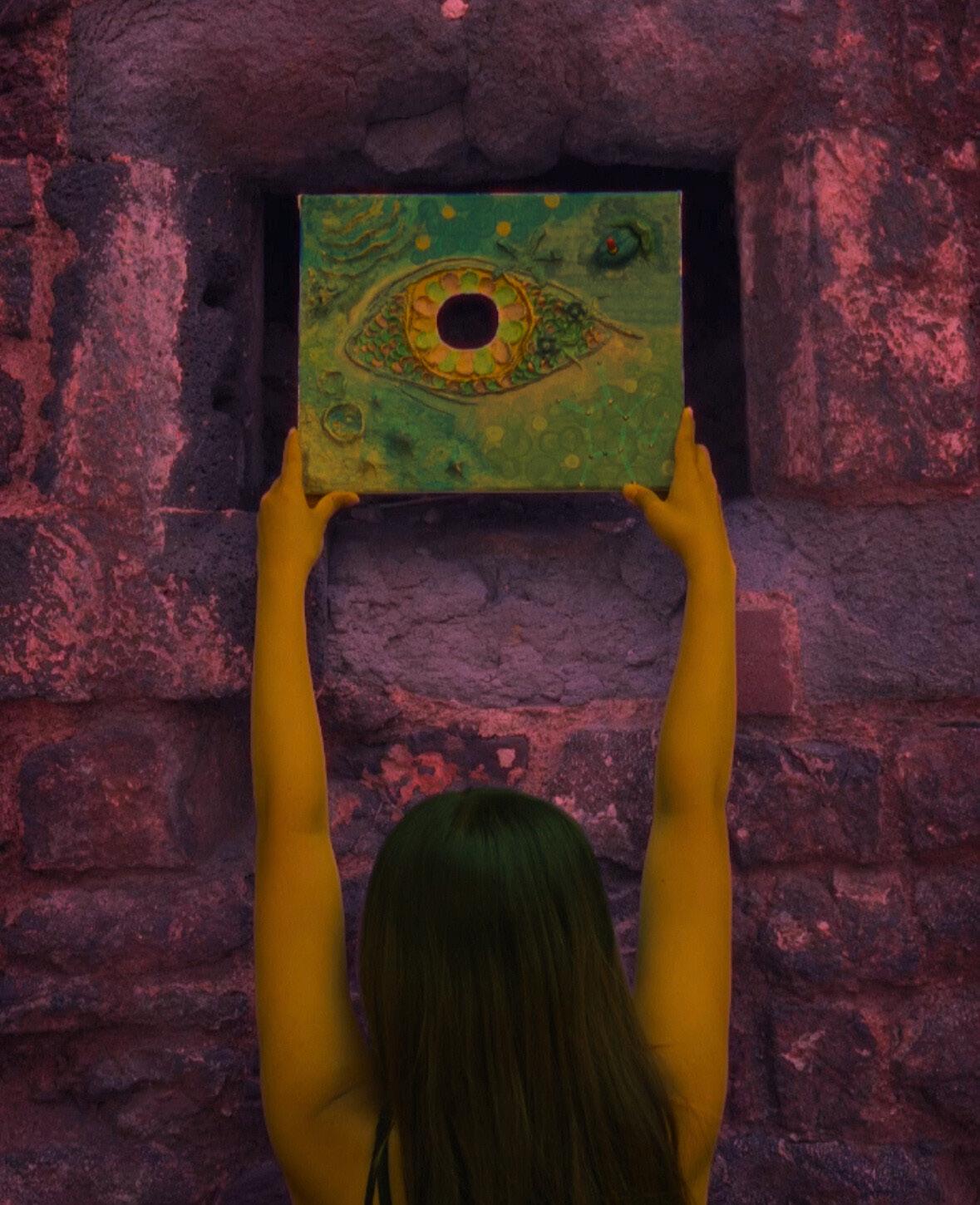


University of Exeter’s Arts, Culture & Lifestyle Magazine


Over the past few years, I’ve found myself increasingly aware of what it means to simply witness – to be present, to observe, to listen without rushing to speak. At university, so much emphasis is placed on doing, achieving, producing. But there’s something equally powerful in paying attention. In noticing quiet moments, in seeing each other clearly, and in holding space for things to unfold.
Cover competition winner: Meina Sumida

This edition of RAZZ invites you to do just that. Our writers and artists have captured what it means to witness – change, beauty, injustice, joy, pain – in ways that are both deeply personal and widely resonant. I hope, as you turn these pages, you feel that you too are part of this act of witnessing.
This is also my last edition as Print Editor-in-Chief and Co-President. I’ve loved every moment of working with the extraordinary, passionate, and generous RAZZ community. My deepest thanks go to our Deputy Editors, Em Hamblin and Elena Ingram Medina; our Copy Editors, Nathan Steward and Lucy Verdier; our Creative Directors, Dharma Austin and Phillipa Bailey; and our Assistant Creative Directors, Lillian Gibbs and Katie Matthews. Your talent and heart are what make this magazine what it is.
Thank you for reading – and for witnessing this chapter with me.
Isabella Wartski, Print Editor-in-Chief and CoPresident
All year long, our contributors have spun together writing of ingenuity and care, and it has been a pleasure to witness. Here, again, we see their talent shine. Thank you to everyone on the RAZZ committee, to our writers, and to our artists. Here's to our final edition!
Elena Ingram Medina, Deputy Print Editor

Witnessing the talent of our writers and the dedication of our RAZZ team throughout the past two years has been so incredible and fulfilling. I’m sad to wave RAZZ goodbye but we’re ending with an incredible issue full of love and care.
Em Hamblin, Deputy Print Editor
There are moments we ‘seek’, others we ‘dream’, some we ‘release’, but only a rare few we truly ‘witness’. My journey with RAZZ has been an unforgettable experience, and creating ‘Witness’ has been a wonderful way to close my final chapter. As always, thank you to everyone for your passion and creativity making this edition.
Dharma Austin, Creative Director

To witness is to notice deeply, to feel what’s real, and to give it the space it deserves. Art is our way of saying: this mattered. I am so grateful for getting to witness Exeter with fresh eyes through RAZZ, and to help represent your voices. What a joy it’s been. Thank you for everything.
Phillipa Bailey, Creative Director
Amber Bragg
Anna-Maria Valenzuela
Charley Huckerby
Dharma Austin
Elena Ingram Medina
Eliza Clark
Em Hamblin
Hannah Clark
Isabella Wartski
Isabel Williams
Katie Matthews

Kitty Carter
Lillian Gibbs
Lucy Verdier
Mary Asse
Meina Sumida
Nathan Steward
Phillipa Bailey
Rosie Lynch
Sadhbh Holden
Sofia Tapia Ulloa
Tom Langley

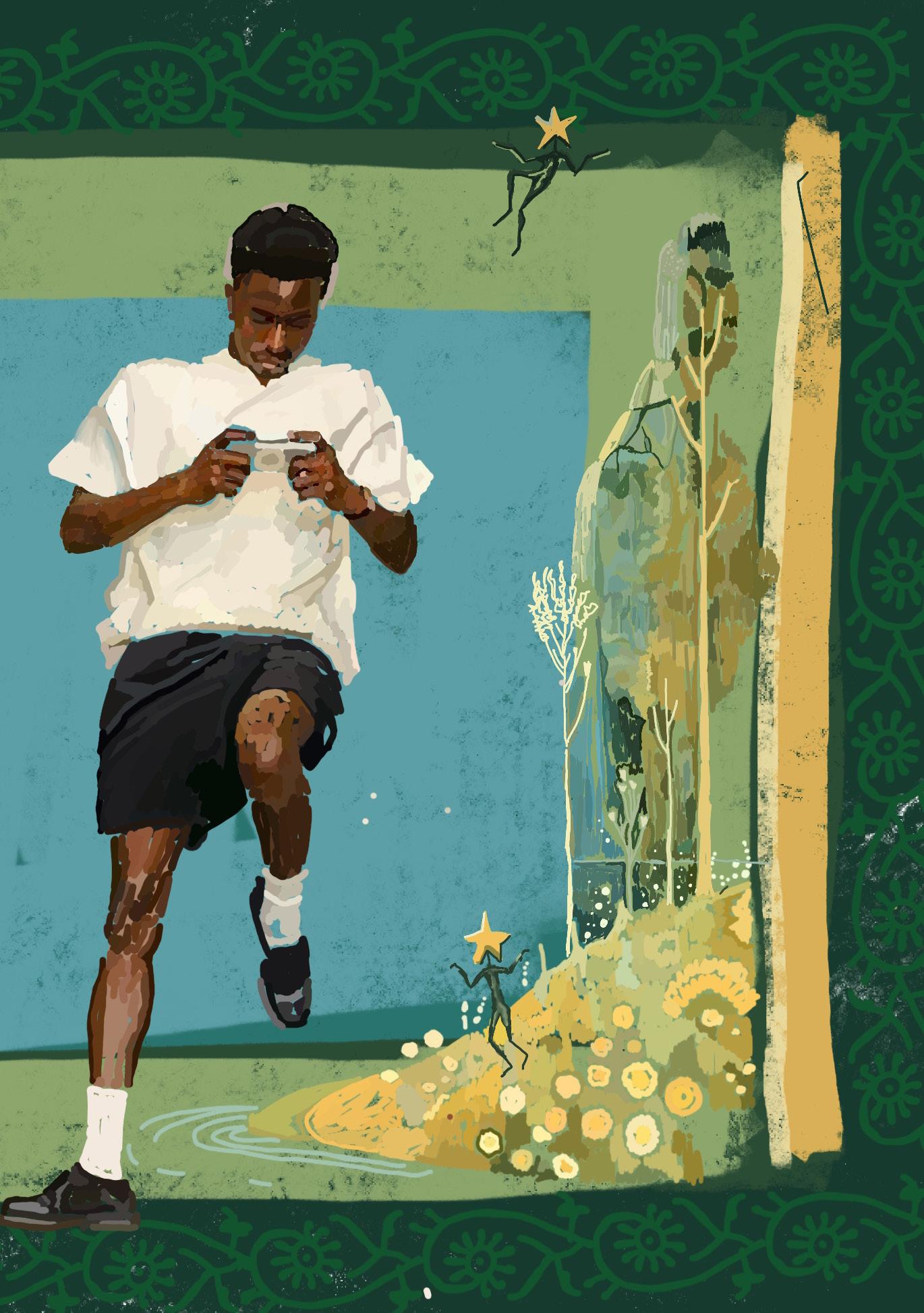
Three RAZZ writers share some unforgettable travel destinations: from vibrant Sri Lanka to Japan’s living cultural heritage and Yorkshire’s rich history and stunning landscapes.

By Rosie Lynch
Last summer, I spent a month in Sri Lanka. There was so much to see and do, so just by highlighting my favourite moments, I hope to inspire readers to consider travelling there!

I volunteered with a charity in the Southern Province, teaching English at a local school in Hikkaduwa. As an English student, being able to experience teaching in a foreign country was so rewarding and eyeopening. Afterwards, myself and other volunteers decided to embark on a week of travel around Sri Lanka.
We visited Sigiriya National Park, where an ancient settlement sits nestled in the landscape. Pigeon Island greeted us with crystal waters, where we snorkelled over coral reefs and saw sharks and turtles. The famous Kandy to Ella trainride through the mountains was a highlight;

witnessing the beautiful scenery of mountains and tea plantations around us. In Ella, we climbed 4,488 feet up to Ella Rock in the dark to catch the most incredible sunrise the next morning. To top it all off, we splashed out on a safari, and saw crocodiles and elephants in Udawalawe National Park. I could write so much more about my experiences volunteering and travelling… but trust me, Sri Lanka is a must for your bucket list!




By Sofia Tapia Ulloa
While some people may be going abroad this summer, there are still plenty of places in the UK that you can visit without breaking the bank. Take advantage of the beautiful sunny weather and venture to the historic county of Yorkshire.
For those in search of some beautiful historic sites, museums and architecture, you need to look no further than the beautiful city of York, with its York Minster, the National Railway Museum, and the medieval shopping streets of the Shambles, amongst other places. For lovers of literature and film, Yorkshire offers you the Brontë Parsonage Museum, Castle Howard (one of Bridgerton’s filming locations) and Chatsworth House (Mr Darcy’s home in the 2005 Pride and Prejudice film adaptation).
Or for more busy city life vibes, go to Leeds and visit the Leeds Art Gallery or peruse the many shops at the Corn Exchange, Trinity Leeds, Kirkgate Market, Victoria Leeds… the list goes on (it is a shopper’s paradise!)
However, if beautiful landscapes are what you are looking for, the perfect places are the Yorkshire Dales National Park, the North York




By Meina Sumida
Japan – the attractive country that can see beautiful nature and advanced digital technological towns. I would like to introduce authentic Japanese traditions in Aomori and Akita. Both prefectures have iconic summer Matsuri (festivals) every August: Aomori Nebuta Matsuri and Akita Kantō Matsuri.


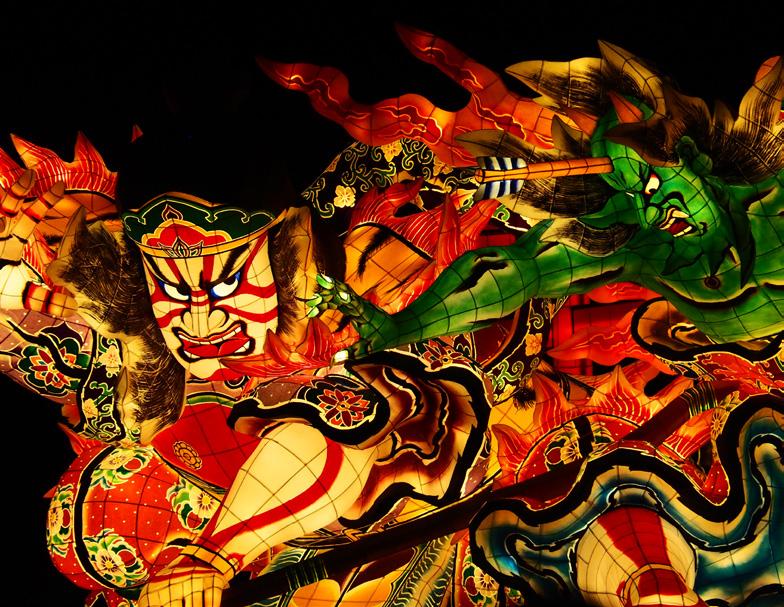
Aomori Nebuta Matsuri has been approved by the government as an important Japanese cultural property since 1980. Nebuta is a sort of massive statue made mainly of paper and bamboo. It has about 1300 years of history and originally this Matsuri prayed for Tanabata, that is the special day celebrating the romantic myths between a princess and a prince; Orihime and Hikoboshi. These days, it prays for health and purification. The concepts of Nebuta statue are based on Japanese myths or demons.
Akita Kantō Matsuri has also prayed for charming against evil spirits in summer. 46 paper lanterns are tied with one long bamboo and it is held by only one hand or forehead or back. The person who holds it competes how they are good at dealing with it. After the parade finishes, you could try to hold it! (I tried before but it was harder than it seemed!)

Don’t miss the best summer!!
RAZZ writer Anna-Maria Valenzuela reviews British barrister Charlotte Proudman’s powerful exposé of misogyny in the UK’s family courts.
“Frequently, this feels like a game that women cannot win.” – Charlotte Proudman
“He Said, She Said is not an easy read, but it is an essential one. For anyone who cares about women’s rights, the legal system, or the quiet battles fought every day in family courts, this book will stay with you. It did for me.” – Jessica Taylor
Part memoir, part legal exposé, He Said She Said weaves together powerful real-life cases with Proudman’s personal experiences of misogyny from within the legal profession. Throughout the book, Proudman takes readers into the heart of the family court system, revealing its failures through cases involving domestic abuse, forced marriage and female genital mutilation.
Proudman artfully humanises the cases she presents, shifting the focus from legal jargon to the lived experiences of
the claimants. The result is a book that not only informs but also challenges the reader, calling into question the current circumstances women across the UK face. Within a legal system built by men - who is justice serving - and how can victims find justice when the institutions they rely on are inherently biased against them?
Fundamentally, He Said She Said is an urgent call to action. Proudman pulls back the curtain on institutional misogyny, conveying how often the family courts fail to protect women and children from abusive men, and exposing a legal system that harms the very people it claims to protect.
Although the book covers cases and topics that are inevitably difficult to read, Proudman leaves the reader with hope that people like her are working from within the system to inspire meaningful change. Although the process is slow, ‘change is on the horizon’.
Three RAZZ writers review powerful novels that uncover the human condition through vastly different cultural and emotional landscapes.
By Eliza Clark
Orbital is a perfect page-turner for anyone eager to zoom out and bear witness to our planet Earth. Samantha Harvey’s 2024 Booker prize-winning novel takes six internationallyidentifying ISS astronauts, and, with very little plot, composes a love letter to the universe, paying witness to humanity from a navel gaze.


The voyage is not the central focus; alongside Harvey’s free indirect discourse, it gives the astronauts the distanced perspective necessary to explore humanity better than is possible for those on Earth. Great ideas of gods and nations are tackled, alongside gravityless practicalities and more trivial shower thoughts, yet all are necessary parts of a greater constellation showing what it is to live, and bear witness, to a meaningful, meaningless existence. Harvey provides both further clarity and further confusion about why we exist and what we should do with the knowledge of existing.

Ultimately, vivid descriptions of the aesthetic spectacle of colours and patterns – often caused by disasters such as hurricanes – are the ecocentric realisation of how little power humanity has in the universe’s course. We are only momentary, a blip, overcomplicated and inconsequential. This book guides solace into this fact, which, for the astronauts, means their life back on Earth will forever be tainted by the unique experience that only very few can share.


Earth’s patient and reliable give and take is at once marvelled at and banalised, held in cold distaste when related to human suffering, and yet she is lovingly gravitated towards when related to a mother. This primal attachment is all that we know. As if reacquainting us with life, Orbital guides your eyes open in a way that sometimes only the most concise of books can. At just under 150 pages (some of which I have fully underlined), it really is a little miracle.


By Nathan Steward
At seventeen years old, James Baldwin abandoned his role as a preacher and experienced a rare moment of clarity and truth in conversation with his abusive father. David Baldwin asked him, "You'd rather write than preach, wouldn't you?" and James knew it was true. Go Tell It On The Mountain is loosely autobiographical; following the day of fourteen-year-old Johny Grimes – a boy in Harlem with a tyrannical preacher for a father – who undertakes a dramatic spiritual journey. The novel explores not only Johny’s perspective but also examines the intertwining sins and tragedies of his father, mother and aunt.
The prose style is biblical and passionate, written with a persuasive elegance where the biographical homosexuality of Johny is always simmering in the background. The book is not a polemic for or against Christianity – rather, it shows that faith does not always make you a good person, without becoming partial against the religion. With the modern weaponisation of Christianity by the current US administration, however, this novel has become an important read, not only for the beauty and honesty of its content, but for its searing admonishment of figures of power who use religion for the encouragement of

Are you looking for an opportunity to reflect upon your life so far philosophically? No Longer Human would be the best book for it. (I give you one caution first, though: it is not an upbeat read.)
The story starts with a catchy and famous line, “I have seen three pictures of the man.” The story is about one man: the author, Osamu Dazai, as it portrays his entire life quasi-autobiographically.
“The man” feels he does not have the same sense as other people, so being a clown is the only way for him to communicate with others. The story depicts how he suffers from hiding his truth within acting. He writes how, in his adolescence, his truth was about to be exposed by others; it threatened him very much, and so, eventually, he decided to hide himself more with tobacco, alcohol, and prostitution. After that, he lost his dignity and self-esteem. Even though he got engaged and had a baby, he never stopped cheating on someone. Finally, he was diagnosed with mental illness and committed suicide with a lover, not his wife.
This book can be read as a witness to our subconscious and some of the uglier aspects of human beings!


By Kitty Carter

She couldn’t remember those words anymore, instead thinking of them stranded on a shoreline somewhere from her last walk in the water. Perhaps they lived in a seashell she picked up on a whim, and they tripped out when she cradled it to her ear. She was left alone with her cavernous mind and lingering ribbons of conversations. She was terrible at forgetting, letting things leave, but the words left on their own.
She could remember the bench, and the glowing windows of houses smiling, and the heavy branches in the night breeze, swinging, rotting, drooping.
She could remember the knots writhing inside her stomach, delicately dancing and twisting, and the way she kept nodding to the beat of their song, swallowing.
She could remember how each step felt like faltering on the edge of a cliff, almost falling, shoulders slumping, her bones feeling wrong.
She started straightening her sheets and looking for the sun in her garden and pausing by chalk drawings on streets and changing her wandering routes.
She was still there. She was still something. She had fewer words in her brain, fewer memories, but forgetting proved essential.
by Lillian Gibbs
There is a great murderer at our door, gnashing and frothing and surging its jaw.
Nobody knows to dread the knock. They worship the sound: slurred salt-crystal breath which reeks from coned and spiralled mouths and drops in sheets behind their ear –I alone taste the truth under the broken mirror – there is a beast at our shore: hungry, vengeful, and how we love to perch inside its sunken, shaking maw and how we giggle when its tongues lick our feet.
We are losing.
The earth is slipping down its throat, it is grinding mountains into dust and we are dancing on the dust like moths above a flame.
There is a great murderer at our door, It is black and blue and demanding more.
Better to be blind or deaf or dumb or numb then to see the sight of silent sickness. Know this, my friend, if you do not drown you will become just another witness.

By Nathan Steward

By Isabel Williams

His was the first face I ever saw, eyes enraptured by every intricate detail on my body. My artist, my father. He stood back, clapping his hands to his chest. This is my masterpiece. I remember how he whispered the words, so gentle, as if the wind would carry his words wind and someone would steal me away.
My birthplace was simple, an artist’s attic decorated in dust. I have been in many galleries which boast splendour, but I don’t think any are as charming as that little room. When they carried me out of the house, I saw how elegant the rest of the house was in comparison, gilded wallpaper and golden candelabras the proof of his success. I never saw him again after I was displaced to the first gallery. Few have looked upon me with such intrigue and awe in their eyes since then. Most scan over me, registering my gown, my posture, before moving on.

"My artist, my father."
I am looked at all day long but rarely feel seen. As time passed, more and more give me only fleetingly glances. I watched skirts shrink and corsets and waistcoats turn to denim and thin clothes. I know their outfits no longer resemble mine, they tell me so. Comments progressing from my dress being out of style, to strange and antiquated. Some time ago a woman stood before in trousers that swelled and flared out around her ankles, her simple top without sleeves freeing her skin. That night after lights off, I imagined how it would feel to dress like that. To feel no burden of heavy clothing and so exposed yet so liberated. If I was her, what would I do? Every day, I toil over these fruitless questions. They are seeds I will never see grow and bloom into life.

From my frame I have seen every variety of people and galleries. I am the one-woman


audience for the stages of life. The last time I was relocated, they blindfolded me with a plastic blanket, and I was placed onto on sort of vessel. In the dark, I danced unwillingly to the unfamiliar sway of the sea. It wasn’t until later, when I overhead the porters talking, that I even knew I crossed sea. I’ve resided here the longest and to me it is home, sometimes more than the little attic I was born in.

To the visitors of my home, I am not real, just an object. I have been called ugly, beautiful, a temptress, a prude. At night I imagine my response, always quickwitted, to the insolent comments. Picturing their faces as they watch me crawl out of the canvas and return their insults. But I am confined to this rectangle with its golden borders. I wish I could climb out of the frame as easily as one climbs out of their bed in the morning, and stand before them. Feel the weight of their eye contact as they see me as a real person. The yearning feels like a pin in a butterfly’s wing; I am weighed down, restrained, unable to take flight. To be known and understood is all I’ve dreamed of as every century passes. History has been lost with every passing year, disintegrating into sand and ruins, with people constantly trying to sort through the debris. No one at this gallery really knows about my history. But I do. I remember.
"I wish I could climb out of the frame as easily as one climbs out of their bed in the morning."
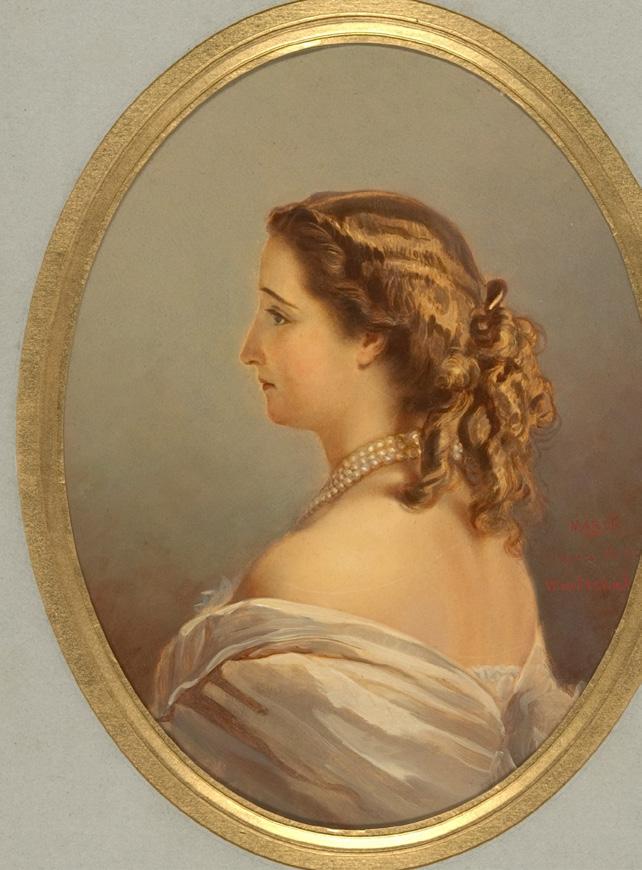
"To be known and understood is all I’ve dreamed of"






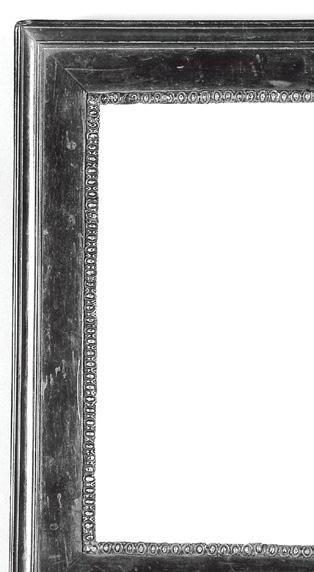
By Sofia Tapia Ulloa
My hands are stained red.
I don’t know why I agreed to paint my dad’s colleague’s fence… oh wait. Right. Because I decided that spending twenty dollars on a giant dinosaur plushie was a “very smart purchasing decision”. Despite what my mom says, it really was, I promise. Though that was three years' worth of savings…

I stare at the six-foot fence. I’ve been painting for three days already, but I only have a tenth of the fence to show for it.
It’s been quiet, though. Very calm and peaceful. My dad’s colleague works long hours, just like my dad always used to do. So the house is empty, which I like very much. I like being left alone with my thoughts. Especially when doing something like painting a fence.
Suddenly, I hear a sound. Not very loud, but enough for me to notice in this silence.
Was it a squirrel climbing up a nearby tree? Or maybe the neighbours have a pet, and I hadn’t realised. A dog? A cat? A turtle? I love turtles. I really hope it’s a turtle…

Another sound, but this time it feels closer… are those footsteps? I have yet to see the neighbours, a “lovely couple” according to the wife of my dad’s colleague. Though the lady I saw him with one afternoon says they are “a bit too uptight”. But I am not supposed to mention that to anyone. The couple never use their backyard, apparently, which is such a pity. They have such lovely grass. I can smell it all the way from here.
Illustration by Lillian Gibbs
I hear a swishing noise. Like a window opening. Or like what I have always imagined a sword fight would sound like. Swish, slash. Slash, swish. Oh, how I would love to be in a sword fight, like the knights in the books my mom reads me. Swish, slash. Slash, swish.
I can hear the sounds of a TV – or is it a radio? – playing in the background. Maybe the neighbours finally decided to open their windows and breathe in the fresh summer air. The weather is very nice. I like it a lot.
But I don’t like whatever they are watching. Is it… what is it that my sister loves watching… a “romcom”? It certainly sounds like there’s a lot of smooching going on. I don’t understand why my sister likes romcoms; they’re so disgusting.

Oh, it stopped. Maybe they switched the channel? Hey, was that a scream? Maybe they decided to watch a scary movie instead… My best friend Andy says they are great, but my parents won’t let me watch any. They say they are too violent. I'm not really interested in them anyway, they seem quite gory.
I keep on painting the fence. I’ve now only got five sevenths left, I think, if I am counting correctly. I do it slowly because I must be careful not to stain the neighbour’s “pristine white” fence. The yelling, screams, or whatever those sounds were, stopped some minutes ago. Maybe they decided not to watch any movies after all.
As I reach for the paint bucket, I see a shadow over me. I look up, but just as quickly as it appeared, it’s gone. Maybe it was a bird.
I continue painting the fence. It is finally calm and quiet again. You could say it’s “dead silent,” as my dad says. I love it, it’s so peaceful. Painting the fence is actually not that bad. And I will be so rich when I finally finish it.
If only my hands weren’t stained red.

RAZZ writer Kitty Carter shares the magic and emotion of witnessing Taylor Swift’s Eras Tour live, exploring memory, music, and what it means to feel seen through song.


Seeing Taylor Swift live was electric. Everyone who attended the Eras Tour – a tour that spanned continents, years, and albums – has their own stories of what it was like and funny anecdotes from their evening; it was a once-in-a-lifetime experience. I say this phrase casually to some people when they ask how it was, and they respond with, “Oh, well, she’ll have another tour, surely?” However, any fan of Swift knows that there won’t be another tour quite like this.
I went in August, and I had only just returned home from working in the USA for a summer. I was jetlagged and running on Diet Coke, but the minute I got on the train at Amersham, I could recognise tour attendees – sparkling, smiling, holding portable chargers and bouncing on their seats.
Attending the tour was a reminder that the Swiftie fandom, or indeed any fandom, is far more than Spotify stats; it’s the community, the memories, and the connection to a lyrical genius who has effortlessly moved between genres across the years. I stood in Wembley Library toilets and applied glitter eyeliner and gems to my sister's and mum’s faces, all full of dizzying anticipation. Queuing didn’t feel real, and it still didn’t feel real when the buzzer went green and I could finally push through the turnstile. It was just me and my sister, making the climb up to the nosebleeds, and I couldn’t stop smiling because I didn’t believe it was
real. It was London Night 5, and I couldn’t even begin to guess what surprise songs we would get.
The Eras Tour is distinctive because of the sheer span of music across Swift’s ‘eras’ – you watch the concert at every age you’ve ever listened to Taylor Swift. I was singing along to Fearless, thinking of my dad’s chunky silver iPod that had the album amongst hundreds of rock albums. She moved on to 1989; I remembered getting an iPod Nano and a speaker as a shared Christmas present with my sister, and the concerts we would perform in our bedroom. I remembered each time I had set alarms to wake early and listen to new albums, everytime I had connected a song to a particular experience and kept it on repeat for a month, the friends I had made at a university society dedicated to Taylor Swift, sharing earphones in the backseat with my sister and listening to Swift’s music at my job to make the shift go faster. The whole night was a wash of memories, mixing with an almost unbelievable in-person experience that connected the entire stadium to one singer.

“It was an experience of a lifetime and one that could not be repeated.”

I also personally really resonated with the surprise songs. “London Boy” was fun and fresh, characteristically expected for a London show, but “Dear John x Sad, Beautiful, Tragic” made the entire night. “Dear John” was a song I had listened to in the passenger seat of my friend’s car on countless trips to Walmart on evenings off at camp, and hearing it live was heart-stopping. I had my fists clenched, tears on my cheeks, and my sister looking at me utterly bewildered, still caught up in the fun of
“London Boy”. It was like Swift knew –that’s fantastical, she didn’t – but it was almost like she did. The rest of the show was a continuous emotional whiplash as she progressed through the Midnights set, and I knew it was coming to an end with barely any voice left and my sister, exhausted, barely standing. It was an experience of a lifetime and one that could not be repeated.
The photos and the videos taken with shaking hands, but more importantly, the memories, are ‘crucial evidence I didn’t imagine the whole thing’ (“I Can Do It With a Broken Heart”, The Tortured Poets Department). It forever deepened my connection to Swift’s discography.
RAZZ writer Tom Langley shares a playlist of rising artists, capturing the buzz of discovering fresh talent before they might be breaking big!

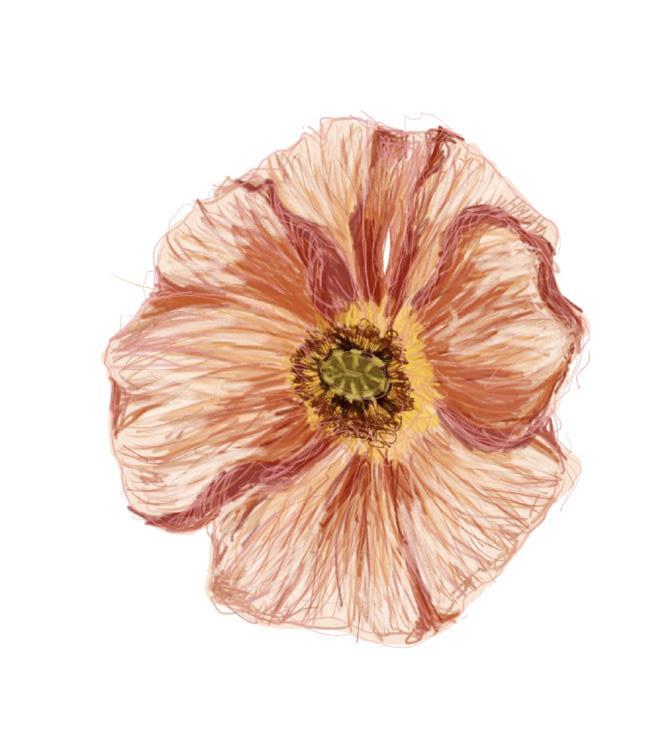

As someone who’s known by friends to gravitate towards the ‘mainstream’ artists you’d hear on Radio 1 Anthems, I find it incredibly refreshing to dip into the world of new artists. Without doubt – and whether I end up liking their music or not – they will always offer a sense of energy and electricity you don’t find elsewhere. We all have the one artist we claim we knew “when they were starting out”, and here are a few rising artists it’s fair to say have a very good chance of making it:







Illustrations by Hannah Clark, rawpixel
“Future Us”
By Litany
Starting strong with Litany, an artist who speaks openly about her experiences with mental health throughout her musicianship. Her latest album, Sadgirl, offers almost everything in the genre of ‘pop,’ and deserves a place on any summer playlist.
“Rodeo Romeo”
By Kai Bosch
22-year-old Bosch is confidently breaking his way into the alt-pop scene with four EPs to date.
In his own words, growing up on “Gwen Stefani, Marina and the Diamonds, and Girls Aloud” (quite the selection) shaped his music production interests.
“Tears”
By BEKA
“Tears” fits perfectly in line with what we hear from the likes of Mimi Webb and Tate McRae – and certainly you’d be forgiven for mistaking it as being from either. BEKA is an easy choice for any dance-pop fan.
“Motorbike”
By Miranda Gent
It wouldn’t be right to talk about up-andcoming artists without recognising the thriving student artist scene in Exeter. This artist is doing everything right, with
“Wet & Wild”
By Rose Gray
Out of all the artists in this list, Gray is likely to be the most recognisable – her upcoming European tour and debut album release earlier this year are certainly gaining the right attention. She’s someone I’ve been lucky enough to see in person, and the electric energy you hear in the studio recording is certainly replicated on stage.







RAZZ writer Mary Asse reflects on shifting music genres and the rise of internet-driven taste, exploring how we witness sound evolving in real time.
The arrival of the 2020s brought cultural and social shifts in many ways; global confinement meant that our way of viewing what it means to live was completely redefined. As in every era, this was reflected in the music scene and the trends that came along with it – and my personal favourite, that I call “future nostalgia”.
Two words. Future nostalgia. A defining trait of not only 2020s pop but also other genres. With pop superstars like Doja Cat (most notably known for her song “Say So”) and other British pop artists, we’ve entered a new era of musical popularity, as the past intersects with the future. Every song has a hint of that nostalgic familiarity, of disco bass lines and 80s synths, but the production is painstakingly modern. Starlettes like Sabrina Carpenter also embody this concept, with her Monroe-esque stage outfits and comedic performances, and her catchy disco-like hit “Espresso” (which, by the way, I still haven’t gotten out of my head since it was released a year ago). Across other genres, we see future nostalgia
through the increased hip hop sampling of iconic 90s songs (such as Kendrick Lamar’s 2024 album GNX), which act as odes to the genre’s origins and constantly evolving nature. On the other hand, celebrities such as Doechii use style and lyricism to pay homage to the ladies that came before; in Doechii’s case, this can be heard most notably in the music of Ms. Lauryn Hill, a female rap pioneer who made waves in 1998 with her groundbreaking album The Miseducation of Lauryn Hill.
It seems like, no matter the genre, artists in this new decade are attempting to recreate the feelings of a time gone by, a time less uncertain than the increasingly digitalised and politically polarised era we live in now. Future nostalgia gives us a way to combine the positive musical innovations of now, while celebrating the past that gave us so much joyful and wonderful music.


“All I did was to look at what the universe showed me, to let my brush bear witness to it,”
- Claude Monet


By Amber Bragg
Sam Fender’s songs have always felt like a keyhole into how the young, Geordie musician witnesses the world around him. From observing some of the closest people in his life to more global themes, each anthem never fails to stay emotionally engaging. He unveiled the “wool over [his] eyes” in his first album, Hypersonic Missiles, which exposes the pitfalls and hardships of workingclass life, as well as delving into the growing societal ignorance he’s noticed surrounding larger conflicts happening on Earth.
Feeling he’d “seen enough of it,” Fender’s second album in 2021, Seventeen Going Under, certainly added an angrier kick. He continues to explore the lives of the “dead boys” of Newcastle in many of his songs, and reflects back on much of his youth through a lens that repositions his angst as feisty and thrilling.
and “Wild Long Lie”, pulled fans right back into Fender’s comforting indie rock style, setting an incredibly exciting high standard for what the rest of the album would give. Yet, as the musician approaches his thirties, the “people watching” Fender sings about has certainly matured.
After my first album listen, what stood out to me particularly was how Fender explores social realism more tenderly than before, and that angst within the younger Fender now holds an undertone of acceptance, and the accompanying thrill at moments has mellowed into nostalgia. But don’t be fooled, his iconic jazz-rock is still as lively as ever, and now can be confidently seen as the musician’s trademark.
“Fender explores social realism more tenderly than before”
Now, for Fender’s long-awaited third album, fans anticipated being personally invited back into Fender’s worldly outlook, so when the album’s title, People Watching, was released, it did not disappoint. His first track releases, “People Watching”
In his opening song, “People Watching”, Fender states that the “beauty in youth, dwells his aching soul” and this softened remembrance of his past years is debated more as the album continues. In the following song “Nostalgia’s Lie”, it is clear Fender has spent time toying with youthful memories in the making of this album, and the song clearly engages with the versatility of emotions reflecting on our past can occupy each of us with.
Fender’s fearless perseverance is what livens this album. In “Chin Up” and

“leaving the concert trying to hold onto the song’s melody in my head for as long as possible”
“Something Heavy,” he continues to address the social realist hardships that both he and many others have endured. Yet unlike many of his socially-realist focused songs, these tracks have added an optimistic spin, instead celebrating the ongoing resoluteness this country has achieved in the past years of economic crisis, lockdowns and job losses. With Fender’s iconic, uplifting jazz-rock style, we are left with two new empowering mantras.
Fender also touches on sharing a new story in “Remember My Name,” a deeply majestic ballad about the impact of dementia on his relationship with a grandparent. Fender’s effortlessly raw vocals only complement further the truly prickling feeling of unknowingness and fate that this song evokes, and the song closes the album in a gripping state of what has been and what is to come.
I got to witness many teasers from the album firsthand at one of Fender’s concerts last December, two months prior to the full album release. Here, Fender made it clear that this album was not something he wanted to rush,
and that immersing himself in as many new experiences as possible during the process of album-making is just as important as possessing any talent to make music with, or else what is there to even sing about!
I remember, in particular, Fender teasing “Arm’s Length” and leaving the concert trying to hold onto the song’s melody in my head for as long as possible, as I didn’t want to wait another two months to hear it again. Once the album was released, it was safe to say hearing it again was just as captivating as I remembered, and “Arm’s Length” is certainly still my favourite song on this album.
People Watching has certainly shown Fender’s growth as a songwriter and musician, as each song feels incredibly well crafted, and in hindsight, the prolonged wait was worth it. However, I did feel like I missed that fiery tune his last two albums had in “Howdon Aldi Death Queue” and “Spice”, which never fail to create a thrilling feeling of release. But hopefully, with the teasing of a deluxe album after releasing “Tyrants” at the end of April, we can anticipate that a fiery tune is still to return.
“immersing himself in as many new experiences as possible”


To witness is to see, to notice, to remember. It is not simply a passive act, but a responsibility – one that holds the power to shape memory, truth, and even how we view justice. In every era, art bears witness to the realities we endure, the societies we build, the relationships we form, and the world we inhabit. Whether in a painting, a poem, or a cry for change, the act of witnessing becomes a connection that binds us to our time and to one another.
Art, perhaps more than any other medium, offers a profound form of witnessing. From ancient cave drawings to contemporary photography, art captures each distinctive zeitgeist. It holds up a mirror to society and, in doing so, it not only documents the world but interprets it. The painter who captures the fatigue of workers in a dimly lit factory, the musician who writes about the ache of displacement, or the filmmaker who spotlights injustice – they are all witnesses, testifying not just to facts but to feeling, nuance, and soul.
Picasso’s Guernica is an example of a monumental witness to the horrors of war. Another form of art – Maya Angelou’s poetry – bears the wounds and resilience of black identity in America in the twentieth century. Both artists’ work does not merely describe events; it immerses us in them, imploring us to remember and respond. In this way, art is not a luxury, but an essential form of recording and remembering.
RAZZ Creative Director Phillipa Bailey reflects on how art intersects with the important act of witnessing
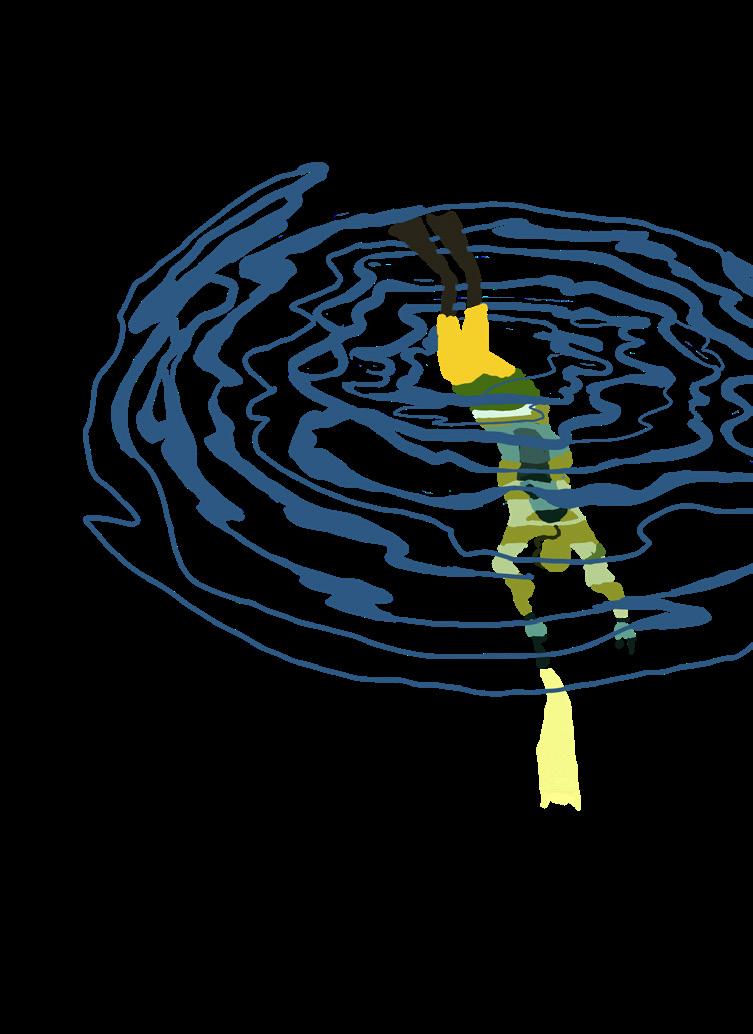
Indeed, life itself, when lived with attentiveness and compassion, can become a witness to truth, beauty, and transformation. When we pay attention to the people around us –be it the quiet suffering of a friend, the unnoticed labour of a stranger, or the fleeting beauty of a sunrise –we bear witness to something larger than ourselves, and we say creation is not forgotten.
This kind of witnessing-to-life becomes especially important in a culture often dominated by noise, speed, and surface. In slowing down to truly see and acknowledge others, we can participate in a deeper kind of storytelling. Our lives, in how we protest, nurture, and create, can themselves be testimonies; signs pointing to hope in the midst of despair, or light in times of darkness.

Creation longs to be seen. The rustle of the wind in trees, the constant changing of the tides, the varied songs of birds – these are the subtle but constant witnesses of the natural world. In an age of environmental collapse, to witness creation is an act of reverence and resistance. The artist who paints a dying coral reef, the poet who writes about a scorched forest, the scientist who sounds the alarm; they all record the simple fact that this world matters.
In witnessing, there is risk. To witness suffering is to allow ourselves to be moved, possibly even undone. To witness joy is to become vulnerable to longing. But the alternative is numbness. And numbness, ultimately, denies the truth of the world.
In both art and life, to witness is not only to see, but to feel and to respond. It is an act that affirms the worth of others, the significance of the present, and the possibility of change. As artists, as friends, as humans, we are called to watch and to remember both the beauty and brokenness around us.

“IT HOLDS UP A MIRROR TO SOCIETY ”